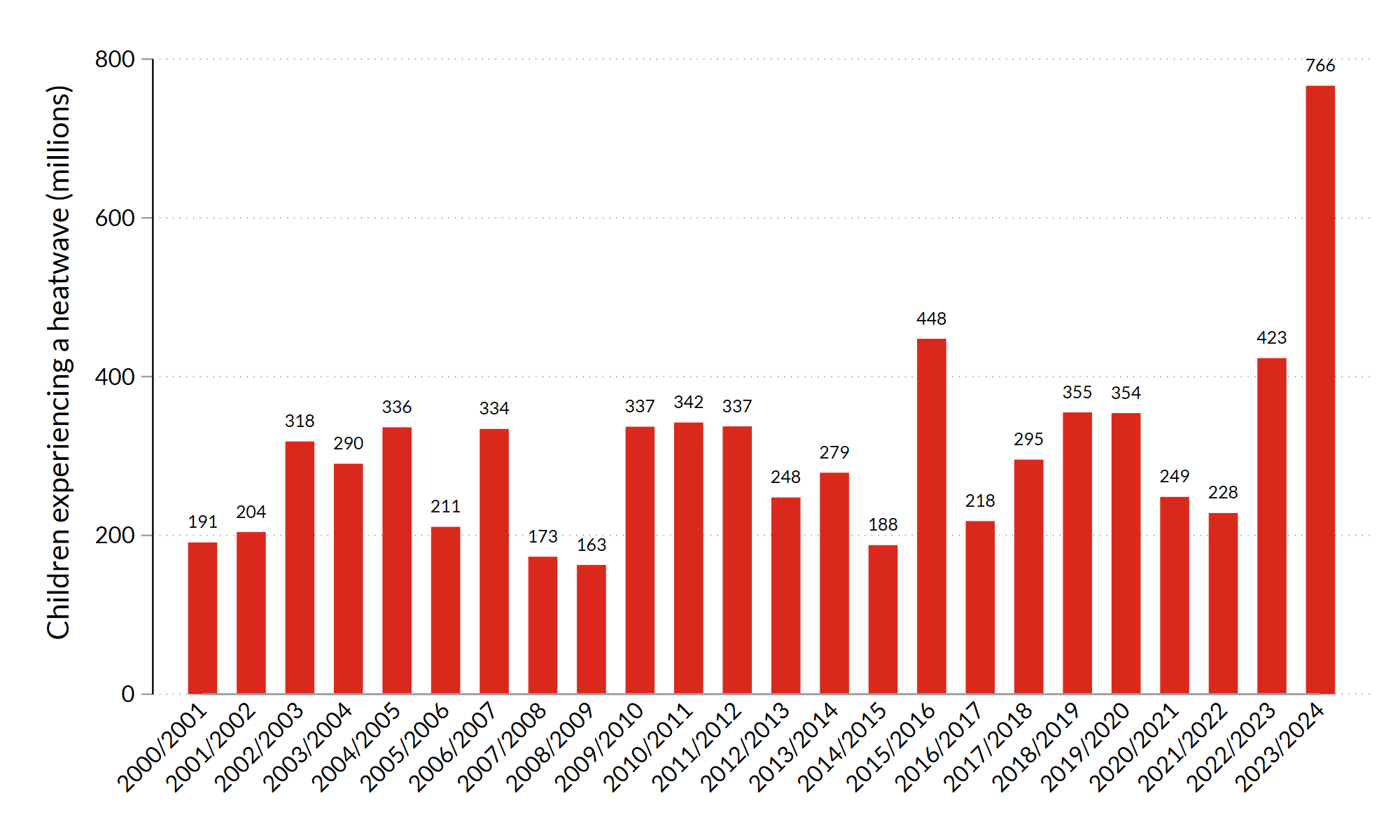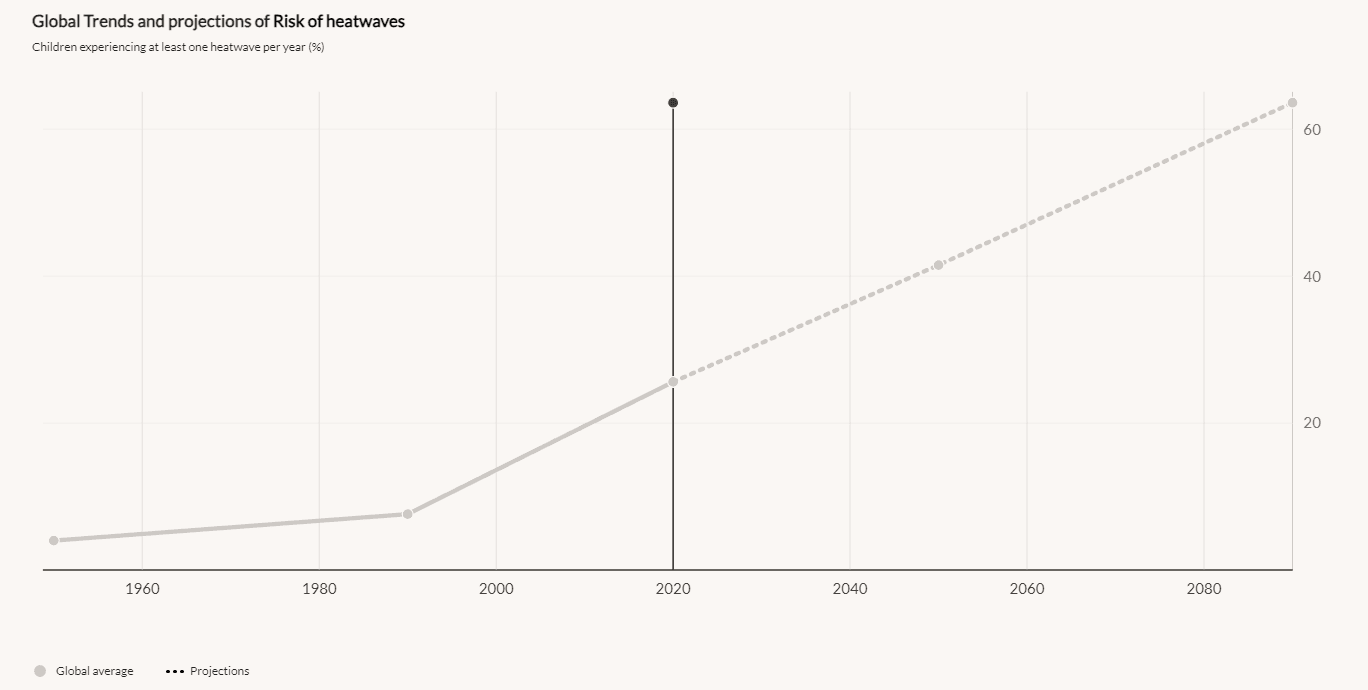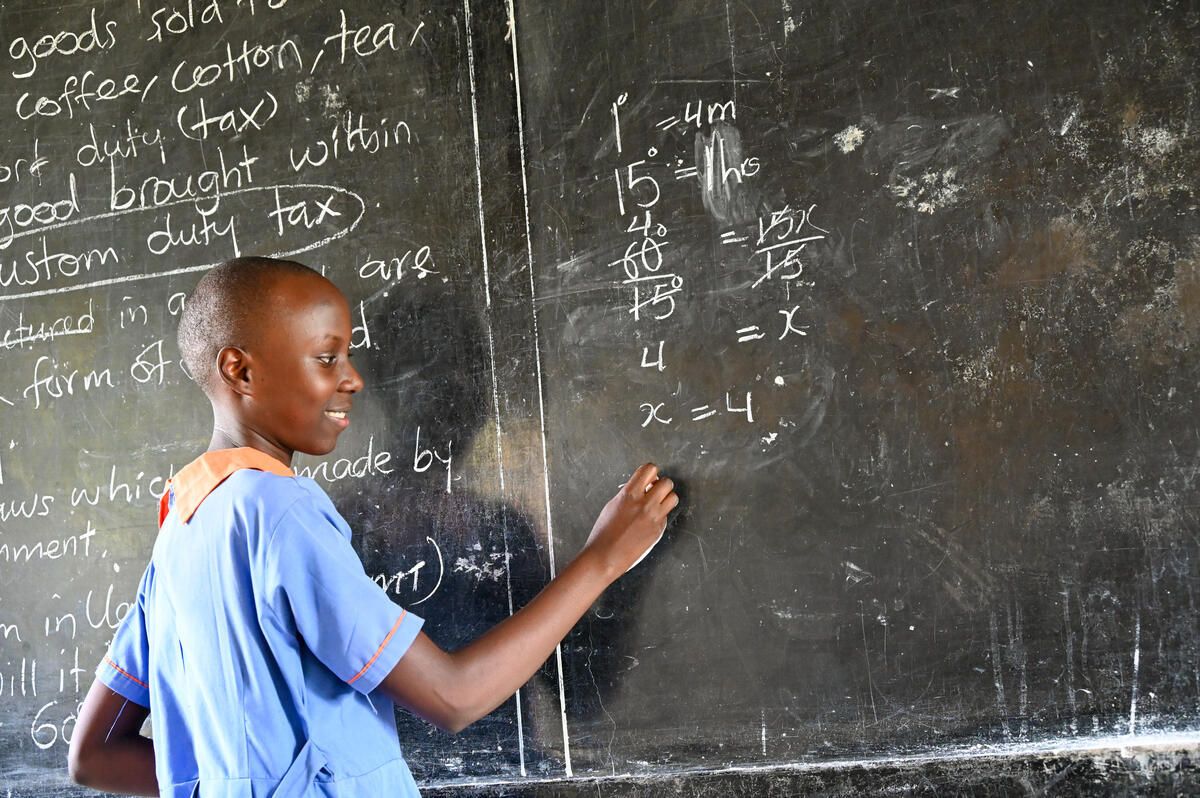Highlighted Stories

Extreme heat and wellbeing: 766 million children exposed to heatwaves in 2023/24
A record 766 million children – one-third of the global child population – were exposed to extreme heatwaves in the twelve months from July 2023 to June 2024. The number of children affected by extreme heatwaves almost doubled from 2022/23 to 2023/24. Most children experiencing a heatwave were living in South Asia (213 million), followed by East Asia and Pacific (129 million) and West and Central Africa (117 million).
In the same period, 344 million children experienced the highest temperature recorded in their location since at least 1980.

Heatwaves risk children’s health and overall wellbeing
Heatwaves impact children’s health, education, nutrition, environment, and wellbeing in different ways, as we explain in this brief. Among others, extreme weather conditions are leading to an increase in child hospitalisations, respiratory conditions like asthma, and impact children’s mental health and overall development. They are also worsening existing inequalities and food insecurity.
Where does this data come from
We estimated the number of children affected by heatwaves using satellite imagery of surface temperatures covering every part the world. First, we needed to clarify what we understand as a heatwave, as there is no universally accepted definition. For the purpose of this analysis, we are defining a heatwave as a period of at least three consecutive days with both the minimum and maximum of the daily surface air temperature exceeding a heatwave temperature threshold. This threshold is determined by the 99th percentile of temperatures observed in a specific location over the 1991-2020 reference period. In other words: we determine that a specific location experiences a heatwave if the temperatures for at least three consecutive days are above the hottest 1% of temperatures measured in the previous 30 years. Once this was done, we used satellite data on the daily surface air temperature from the Copernicus Climate Change Service (C3S) of the European Union to identify the locations affected by a heatwave between July 2023 and June 2024 (see map below). Finally, we combined this information with the distribution of the child population globally (using gridded child population from WorldPop and country-level estimates from the United Nations World Population Prospects). The full methodology explains the previous steps in more detail.
More heatwaves in the future
Heatwaves are likely to become more common as a consequence of climate change. Data in the Child Atlas on the risk of heatwaves (stemming from global climate models and therefore not directly comparable to the figures above) suggest that the share of children experiencing at least one heatwave per year is increasing from 26% in 2020 to 64% by the end of the century (other studies expect even higher risks of heatwaves for children in the future). World leaders must therefore demonstrate that they are willing to take bold action to protect children from heatwaves and other climate-related events – our policy briefing lays out the details of this.

Related stories

Who benefits from public spending? New evidence on pro-poor investments
Financing & Accountability (FA)
2025-04-07

Nightlights and shocks: Understanding disaster recovery pathways using night light data
Crisis & Insecurity (CI)
2025-04-03